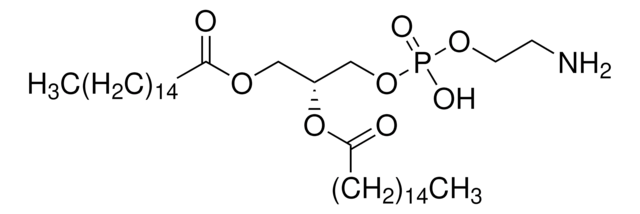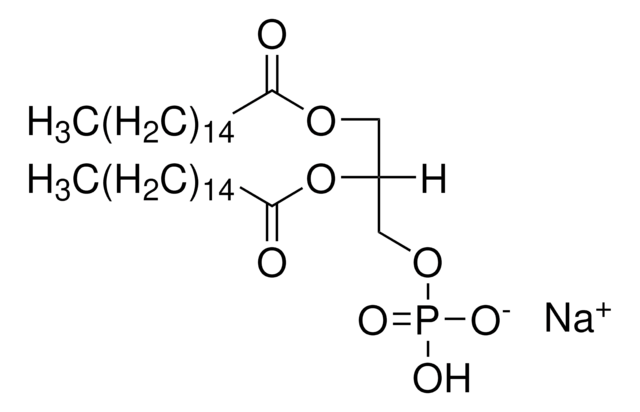Key Documents
850699C
Avanti
08:0 PE
1,2-dioctanoyl-sn-glycero-3-phosphoethanolamine, chloroform
Synonim(y):
PE(8:0/8:0)
About This Item
Polecane produkty
Próba
>99% (TLC)
Postać
liquid
opakowanie
pkg of 1 × 1 mL (850699C-10mg)
pkg of 1 × 2.5 mL (850699C-25mg)
pkg of 1 × 20 mL (850699C-500mg)
producent / nazwa handlowa
Avanti Research™ - A Croda Brand 850699C
stężenie
10 mg/mL (850699C-10mg)
10 mg/mL (850699C-25mg)
25 mg/mL (850699C-500mg)
Warunki transportu
dry ice
temp. przechowywania
−20°C
ciąg SMILES
[H][C@@](COP([O-])(OCC[NH3+])=O)(OC(CCCCCCC)=O)COC(CCCCCCC)=O
Opis ogólny
Zastosowanie
Działania biochem./fizjol.
Opakowanie
Informacje prawne
Hasło ostrzegawcze
Danger
Zwroty wskazujące rodzaj zagrożenia
Zwroty wskazujące środki ostrożności
Klasyfikacja zagrożeń
Acute Tox. 3 Inhalation - Acute Tox. 4 Oral - Carc. 2 - Eye Irrit. 2 - Repr. 2 - Skin Irrit. 2 - STOT RE 1 Oral - STOT SE 3
Organy docelowe
Liver,Kidney, Respiratory system
Kod klasy składowania
6.1D - Non-combustible acute toxic Cat.3 / toxic hazardous materials or hazardous materials causing chronic effects
Klasa zagrożenia wodnego (WGK)
WGK 3
Temperatura zapłonu (°F)
does not flash
Temperatura zapłonu (°C)
does not flash
Certyfikaty analizy (CoA)
Poszukaj Certyfikaty analizy (CoA), wpisując numer partii/serii produktów. Numery serii i partii można znaleźć na etykiecie produktu po słowach „seria” lub „partia”.
Masz już ten produkt?
Dokumenty związane z niedawno zakupionymi produktami zostały zamieszczone w Bibliotece dokumentów.
Nasz zespół naukowców ma doświadczenie we wszystkich obszarach badań, w tym w naukach przyrodniczych, materiałoznawstwie, syntezie chemicznej, chromatografii, analityce i wielu innych dziedzinach.
Skontaktuj się z zespołem ds. pomocy technicznej










